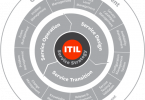ITIL Financial Management is also called Financial Management for IT Services and refers to a section of the Service Strategy phase of the ITIL framework. In addition to financial management, the Service Strategy phase includes four other processes. These are:
- Service portfolio management
- Demand management
- Business relationship management
- Strategy management for IT services
Download Now: ITIL 4 Best Practice e-Books
These all-new for 2020 ITIL e-books highlight important elements of ITIL 4 best practices. Quickly understand key changes and actionable concepts, written by ITIL 4 contributors.
These five important tenets of this phase work in tandem to offer best practices that lead to continual process improvement.
For IT service-oriented organizations, quality service doesn’t just mean providing excellent IT services for the customer. It also means applying best practices that offer helpful efficiencies around finances to improve the overall business model. This is especially useful for IT organizations that have increasingly complex technology expenditures.
With global IT spending expected to grow 3% by 2021, exceeding $3.5 trillion, there’s never been a better time to implement ITIL financial management.
What is Financial Management for IT?
The main goal of financial management for IT services is service valuation or defining the value of the services offered to clients by taking into account all costs. In the financial management process, accounting, budgeting and charging all lead to the same end: recovering expenses and generating profit for the IT-services oriented organization.
Other benefits achieved by implementing an ITIL framework for financial management include:
- Creating a comprehensive inventory of all hardware, software and assets.
- Cultivating a stronger understanding of which assets the organization needs to function.
- Improved efficiency.
- Lower service cost.
During the financial management process, business leaders focus on the “ABCs” of financial management for IT services to ensure the highest level of service delivery at the lowest cost.
Let’s review each in turn.
Accounting
In this context, accounting sets out to determine the cost of providing services with the end goal of improving the efficiency of the IT department.
During the IT accounting process a cost, benefit, class and recording is assigned to each service, making it easy to determine which services are the most profitable, lowest risk and most beneficial to customers.
There are three main categories that IT Accounting works within. These are:
Cost-benefit analysis
This involves examining total lifetime costs of a project such as:
- Initial costs
- Training and staff costs
- Maintenance costs
- One-time costs e.g. upgrades
Against the expected benefits (in dollars) including:
- Reduced labor costs
- Increased productivity
- Reduced waste
Classification
Costs are usually categorized into one of the following areas:
- Hardware
- Software
- Infrastructure (non-software)
- Staff costs
- Overhead
Service or customer recording: This data class assigns costs to specific services and in some cases, to specific customers.
Budgeting
Today, IT budgeting requires a careful balancing act between “keeping the lights on” and driving digital transformation. To that end, there are three main categories of IT spending as follows:
Capital expenditures – This includes the acquisition of large software licenses, major repairs, software upgrades or the purchase of hardware.
Operating budget – These expense cover items to run the business such as maintenance and support for hardware as well as software. Interestingly, a recent BMC survey showcased that 37 percent of executives said that the majority of their IT budgets goes to ongoing maintenance and management, tasks like maintaining uptime and availability; applying upgrades, fixes and patches; and ensuring security – versus new project development or new initiatives like digital, virtualization, or cloud.
Strategic spending – New projects as described above to transform the business.
Charging
When making considerations around charging, organizations determine how much to bill customers for services rendered. This typically takes into account the value of the service and the time investment required for service delivery.
If an organization only provides services to internal customers, like an internal IT department for an enterprise organization, it is not usually necessary to bill the customer. In these instances, the charge is absorbed into the overhead of the organization or allocated to that department internally.
Developing a Chargeback Model
Simply put, a chargeback model will help you determine how much to bill in order to recover costs. Creating a chargeback rate means understanding cost and adding a margin. In a Top-Level Summary sheet like this one, organizations define rates by adding their overhead percentage to their chargeback rate.

Source: InformIT
Integrated ABCs
It is important to note that these processes don’t exist in a vacuum. Each relies on the other to drive the desired performance results of the IT organization.
For example, a new budget usually emerges after careful planning at the beginning of the fiscal year. Each month, this budget is either supported by accounting data or the IT department will need to make adjustments in order to get back on track. Similarly, output from accounting data is used to set charge rates, which eventually converts to revenue which, in turn, drives the budget.
Inventory
IT inventory management is addressed in the ITIL Asset and Configuration Management phase of the framework. While it is not directly related to the Service Strategy phase we have been discussing, having a well-cataloged inventory is still important.
During the identification step of Service Asset and Configuration Management, a comprehensive inventory is developed. In addition, business leaders conduct an audit where they record all aspects of an item including some or all of the following:
- Unique identifiers
- Name
- Description
- Versions
- Location
- Current status
- Supplier information
Continuous Improvement Through Financial Management
Most IT organizations are heavily focused on bringing quality IT services to internal or external customers. As a result, oftentimes, accounting, budgeting and billing take a backseat. However, by applying the ITIL framework, businesses can use best practices to bolster financial management and the overall strength of their IT organization.
In this post, we’ve explained the ABC’s of financial management and why they are important to continuous improvement. Like most of the ITIL framework, the process is circular. Accounting supports charging, charging supports budgeting and budgeting supports accounting in an infinite loop throughout the life of your organization.
At its foundation, the financial management process requires a detailed inventory catalog of assets and investments for any organization to successfully apply these principles.








